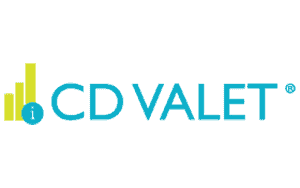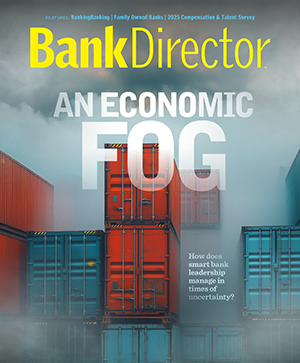Mary Grace Roske is the Head of Marketing & Communications for CD Valet, a digital marketplace that connects consumers with top CD rates from banks and credit unions nationwide and enables financial institutions to efficiently and cost-effectively attract retail deposits.

Rethinking CDs: A Strategic Lever for Sustainable Deposit Growth
Banks that take the proper steps to prioritize relationship-building can transform CDs into long-term growth engines.
Brought to you by CD Valet

As new deposits can be expensive to attract and retain, deposit growth must be treated as a critical strategic imperative. Although often dismissed as hot money, certificates of deposit (CDs) can serve as a powerful tool to attract high-value savers and stabilize funding — especially when paired with smart pricing, targeted marketing and a robust digital presence.
Digital Discovery as a Differentiator
Persisting economic uncertainty is prompting some consumers to gravitate toward predictable, interest-bearing savings vehicles, with CDs often emerging as a preferred choice. With 80% of CDs set to renew this year, banks have a timely opportunity to grow market share with this product. This opportunity is sizable. Only eight institutions currently control over 30% of the entire CD market, despite many of these banks failing to offer the best rates. And at $2.5 trillion, the CD market has enough deposits to go around, satisfying the remaining 8,500 plus financial institutions.
Too often, the issue isn’t the bank’s deposit product itself — it’s the lack of visibility. Instead of poring over rate sheets or visiting branches, most consumers are now searching online for their savings options, influenced by digital experiences and convenience. If a CD offer isn’t digitally discoverable, it’s effectively invisible — no matter how attractive the rate.
Today’s CD marketplaces are frequently skewed toward large national brands with deep advertising budgets, leaving regional and community banks at a disadvantage. To correct this challenge and level the playing field, banks should seek out unbiased digital marketplaces that showcase institutions of all sizes and offer geo-targeting to reach local savers. This can be a cost effective yet impactful marketing channel for customer and deposit acquisition.
When evaluating potential marketplaces and partners, there are several factors a bank should consider. First, if the marketplace can qualify leads, sending only savers that meet the institution’s specific criteria — usually location. If not, time will be wasted for both bank and saver.
Banks should also evaluate if the marketplace has controls in place to align with the bank’s budget, such as the ability to turn off the CD offer once a bank’s budget threshold is met on a daily or monthly basis, or if the institution has raised its desired funding amount. Look out for monthly minimums too, as some marketplaces require commitments larger than many community or regional banks can afford.
Other factors can help enhance the effectiveness of a bank’s performance in a digital marketplace. For example, compelling product features, primarily rate and maturity, as well as offering a seamless digital account opening experience drive stronger results.
It’s important to evaluate marketings costs. Depending on their CD rate, banks may raise deposits more cost effectively than before, with a potential customer acquisition cost starting as low as $73 per account and ranging to $250 for a competitive, but not standout, CD. This compares to a typical range of $175- $300. The conversion cost is strongly influenced by the rate offered and the bank’s ability to convert leads through effective digital account opening and personal service.
Banks on digital deposit marketplaces also benefit from a halo effect that drives in-branch traffic and phone inquiries. When these opportunities convert to new accounts, the economics of marketplaces become even more favorable.
From Transaction to Trust
Securing the new CD is only the beginning. While it’s true that some CD holders fit the fast in, fast out stereotype, churn isn’t caused by offering CDs — it’s the result of not nurturing the relationship afterward. Banks that take the proper steps to prioritize relationship-building can transform CDs into long-term growth engines.
The follow-up matters. Think of the power of mid-term check-ins, tailored renewal offers and ongoing financial education that’s engaging and relevant. Those are elements that foster loyalty. CDs shouldn’t be treated as transactional. They can and should serve as a meaningful entry point to broader, longer-term financial relationships.
It’s also critical to recognize that not all CD shoppers are alike. For example, younger customers may gravitate toward shorter-term options tied to specific savings goals, while older savers may prioritize longer-term stability and yield. Smart segmentation allows banks to tailor messaging and offers accordingly, positioning promotions as relationship-building opportunities that lead to cross-sell and deeper engagement.
Deposits are the lifeblood of community institutions, and in today’s competitive landscape, success hinges not just on offering attractive CD rates but on making those offers visible via relevant digital channels. CDs can be so much more than a funding tool. If approached strategically, they can act as a gateway to deeper engagement and long-term growth.


